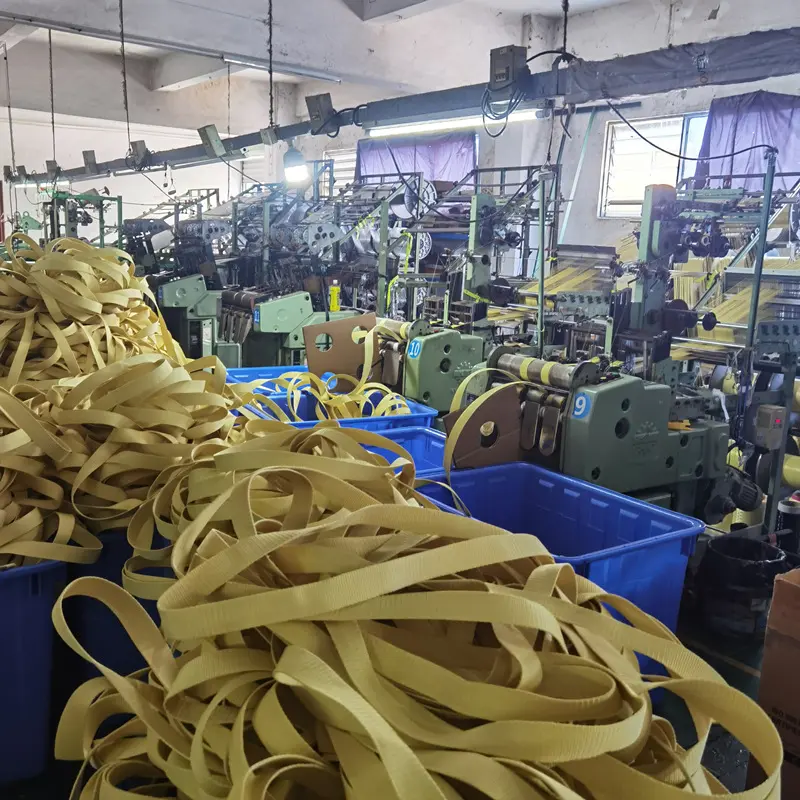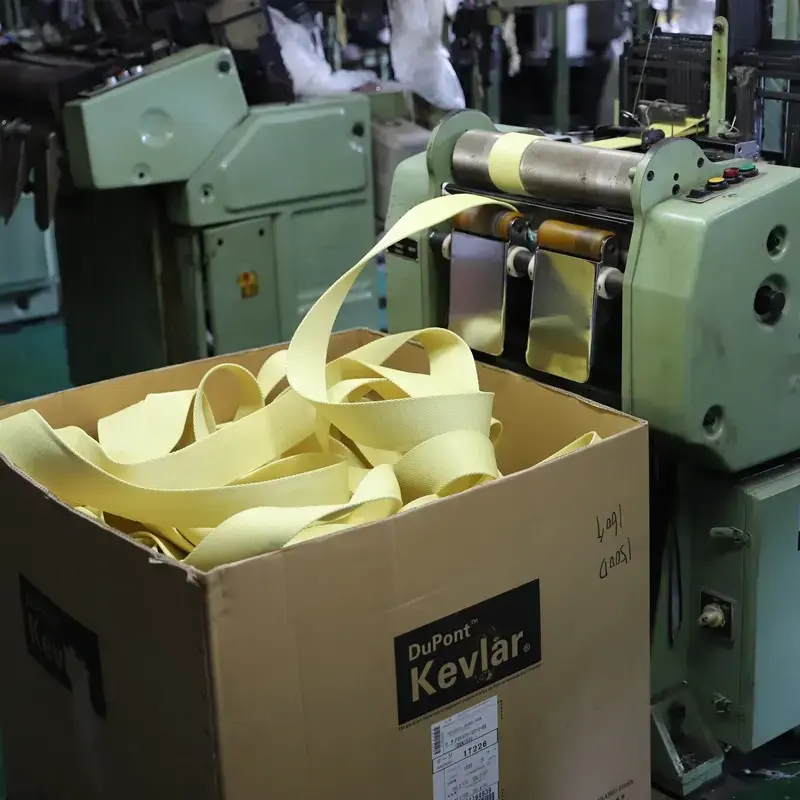When an application demands uncompromising strength and performance under extreme conditions, few materials can rival aramid fibers. Best known by the DuPont™ brand name KEVLAR®, aramid webbing is a high-performance material critical to industries where failure is not an option. From firefighter turnout gear to military ballistic vests, this flame-retardant webbing provides life-saving protection.
But what exactly is aramid, and what makes KEVLAR® webbing so exceptional? This guide explores the science behind this "bulletproof" material, its key properties, and its most critical applications.
What are Aramid and KEVLAR®?
Aramid is a class of high-performance synthetic fibers, with "aramid" being short for "aromatic polyamide." These fibers are characterized by their incredible strength and heat resistance. KEVLAR® is a specific type of para-aramid fiber developed by DuPont™ in 1965. Its molecular structure consists of long, highly-oriented chains that are crystalline, giving it its legendary strength.
While KEVLAR® is the most famous brand, other aramids like Nomex® (a meta-aramid) also exist, offering different properties. For applications requiring the absolute highest tensile strength and cut resistance, para-aramids like KEVLAR® are the top choice.
Key Properties of Aramid Webbing
The unique molecular structure of KEVLAR® gives its webbing a combination of properties that make it indispensable for high-stakes applications:
- Extreme Strength-to-Weight Ratio: Ounce for ounce, KEVLAR® is five times stronger than steel. This allows for the creation of robust yet lightweight equipment, enhancing mobility for soldiers and first responders.
- Flame and Heat Resistance: Aramid webbing is inherently flame-retardant. It does not melt or drip when exposed to intense heat and will only begin to decompose at temperatures above 800°F (427°C). This makes it essential for firefighter gear and protective clothing. For a more in-depth comparison of flame retardant properties, please refer to flame-retardant-webbing-guide.
- Superior Cut and Abrasion Resistance: The toughness of aramid fibers provides excellent protection against cuts, punctures, and tears, ensuring the integrity of safety equipment under duress.
- Ballistic Protection: While no fabric is truly "bulletproof," the tightly woven fibers of aramid webbing are incredibly effective at absorbing and dissipating the kinetic energy of projectiles, which is why it's a cornerstone material for body armor.
KEVLAR® vs. Other High-Performance Webbing
To truly understand its value, it's helpful to see how KEVLAR® webbing stacks up against other common industrial fibers.
| Property | KEVLAR® Aramid | Nomex® Aramid | High-Tenacity Polyester | Nylon 6,6 |
|---|---|---|---|---|
| Tensile Strength | Exceptional (5x stronger than steel by weight) | Very Good | Excellent | Excellent |
| Heat Resistance | Decomposes at >800°F (427°C), does not melt | Excellent, does not melt | Melts at ~490°F (254°C) | Melts at ~500°F (260°C) |
| Cut Resistance | Exceptional | Poor to Fair | Poor | Fair |
| UV Resistance | Poor to Fair (Often requires a protective jacket) | Good | Excellent | Good |
| Primary Use Case | Ballistics, Cut-Protection, High-Temp Reinforcement | Protective Apparel (Firefighter gear) | Cargo Straps, Slings | Safety Harnesses, Recovery Straps |

Critical Applications in Military & Fire Safety
The combination of strength and flame resistance makes aramid webbing a non-negotiable component in personal protective equipment (PPE) for the most demanding professions.
Military and Tactical Gear
In military applications, every gram matters. Aramid webbing is used extensively in load-bearing equipment, helmet straps, and carriers for ballistic plates. Its ability to provide superior protection without adding significant weight is crucial for mission effectiveness and soldier safety. The material's durability ensures that gear can withstand the harshest battlefield conditions.
Firefighting and Emergency Services
For firefighters, exposure to extreme heat is a constant danger. Aramid webbing is a key component in Self-Contained Breathing Apparatus (SCBA) harnesses and Drag Rescue Devices (DRDs). These devices must remain strong and reliable even when exposed to flames, allowing rescuers to pull an incapacitated colleague to safety. The webbing's inherent flame resistance ensures it won't fail when it matters most.
Frequently Asked Questions about KEVLAR® Webbing
Can KEVLAR® webbing get wet? Is it waterproof?
KEVLAR® webbing can get wet, but like nylon, it will absorb some moisture which can slightly reduce its tensile strength temporarily. It is not inherently waterproof. However, for applications requiring water resistance, it can be treated with special coatings.
What is the difference between KEVLAR® and Nomex®?
Both are aramids made by DuPont™. KEVLAR® is a para-aramid, prized for its extreme strength and cut resistance. Nomex® is a meta-aramid, known for its exceptional heat and flame resistance, but with lower tensile strength. Think of KEVLAR® for strength (body armor) and Nomex® for heat protection (firefighter coats).
Can you dye KEVLAR® webbing?
Due to its highly crystalline molecular structure, KEVLAR® is notoriously difficult to dye. The natural color is yellow. While some solution-dyed options exist (where color is added during fiber production), post-production dyeing is generally not feasible and can compromise performance.
When performance cannot be compromised, aramid webbing is the proven solution. Its unique blend of strength, heat resistance, and lightweight durability makes it the material of choice for protecting those who protect us. Contact TMG Webbing to discuss how certified aramid and KEVLAR® webbing can elevate your high-performance products.

